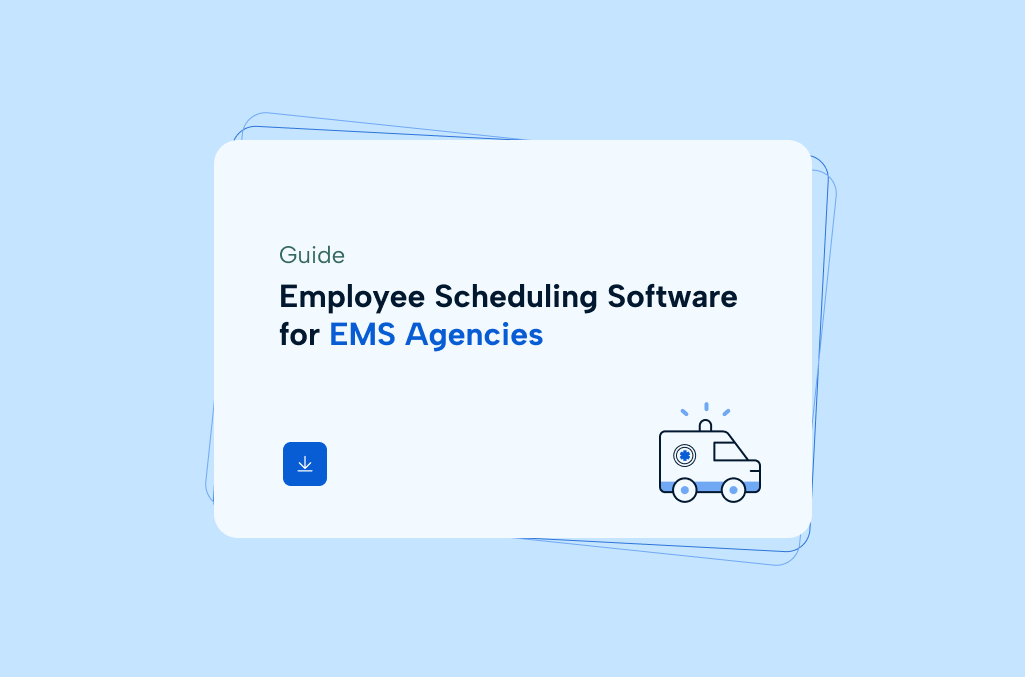EMS agencies face nonstop pressure to keep rigs staffed, certifications current, and crews rested — all while responding to unpredictable call volumes.
Whiteboards and spreadsheets can’t keep up with 24/7 operations. When coverage gaps appear, the impact is immediate: slower response times, burned-out crews, and risks to community trust.
This guide explains why scheduling is uniquely complex in EMS, and highlights the capabilities you should demand from any EMS scheduling software. You’ll also learn how smarter scheduling reduces overtime, protects compliance, and keeps your crews motivated and mission-ready.
Whether you run a municipal department, private ambulance service, or volunteer squad, this resource gives you a framework for success with EMS scheduling software to build stronger teams.
What’s inside the guide
- Why scheduling is different in EMS
- Core capabilities every EMS scheduling software should have
- How to evaluate employee scheduling vendors before you buy
- ROI and total cost of ownership
- Questions to ask before you buy
- Transform your EMS agencies with better employee scheduling

